Fire safety
What is fire?
Fire is the result of heat, fuel, and oxygen mixing together in the proper proportions with an uninhibited chemical chain reaction.
Extinguishing methods
To stop a fire, remove one or more of the elements which enable combustion represented here by the Fire Tetrahedron.
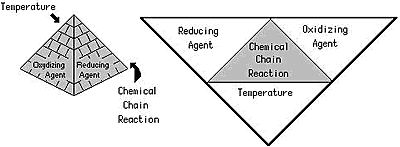
Extinguishment theory
- Temperature reduction
- Fuel removal
- Oxygen dilution
- Inhibit chemical chain reaction
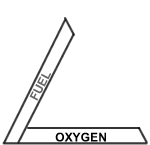 |  | 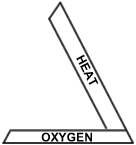 |
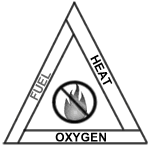 |
Classification of fire
| Class Name | Letter Symbol | Image Symbol | Description |
|---|---|---|---|
| Class A or Ordinary Combustibles |  |  | Includes fuels such as wood, paper, plastic, rubber, and cloth. |
| Class B or Flammable and Combustible Liquids and Gases |  |  | Includes all hydrocarbon and alcohol based liquids and gases that will support combustion. |
| This includes all fires involving energized electrical equipment. |  |  | This includes all fires involving energized electrical equipment. |
| Class D or Combustible Metals |  | Examples of combustible metals are: magnesioum, potassium, titanium, and zirconium. | |
| Class K or Kitchen |  | Includes unsaturated cooking oils in well insulated cooking appliances located in commercial kitchens. |
Types of fire extinguishers
There are many types and manufacturers of fire extinguishers. There are also many different types of extinguishing agents. The extinguishers listed below are the most common types found on campus.
| Extinguisher type | Range | Duration of use | |
|---|---|---|---|
| Water extinguisher | 30-40 feet | 60 seconds | |
| | Dry Chemical extinguisher | 5-20 feet | 8-25 seconds |
 | CO2 extinguisher | 3-8 feet | 8-30 seconds |
Use of portable fire extinguishers
- A monthly "quick-check" is important to determine if an extinguisher is ready to use. The checklist includes:
- Proper location
- No physical or visual obstruction
- Safety seals in place
- Check fullness by "hefting"
- No obvious physical damage, corrosion, leakage, or clogged nozzle
- Pressure gauge in the operable range
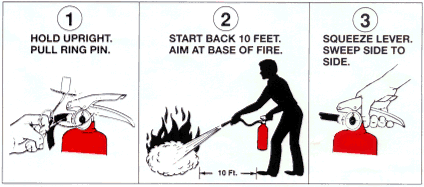
Reporting a fire emergency
- Activate fire alarm on the way out of building
- Notify WSU Police at 7-2222. Give at least:
- Your name
- Your location
- A description of the emergency
- A description of current conditions
- A description of any special hazards or needs, such as hazardous materials storage or non-ambulatory occupants
- Stay on the line, unless told to do otherwise
Employees are not expected to be firefighters!